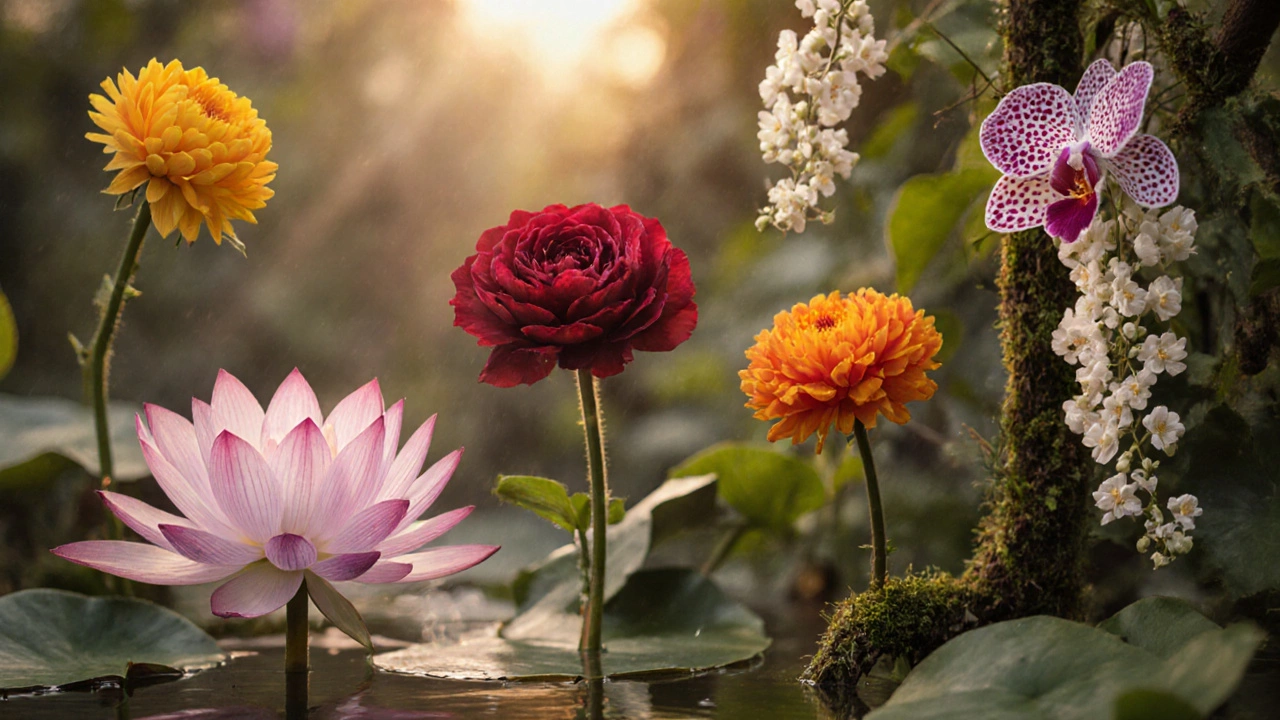Explore India's top beautiful flowers, from the iconic lotus to fragrant jasmine, with cultural insights, growing tips, and a handy comparison guide.
Indian National Flower: What It Is, Why It Matters, and How It Fits Into Indian Gardens
When you think of the Indian national flower, the sacred lotus, a water-blooming plant deeply tied to India’s spiritual and cultural identity. Also known as Nelumbo nucifera, it is not just a botanical choice—it’s a living emblem of purity rising from muddy waters, a theme echoed in ancient texts, temple carvings, and modern Indian identity. Unlike imported ornamentals, the lotus thrives naturally across India’s wetlands, ponds, and rice fields, making it more than a symbol—it’s a native plant that belongs here.
The lotus, a water plant with large, showy flowers and broad floating leaves. Also known as sacred lotus, it is often confused with water lilies, but they’re different species. The lotus has a unique ability to regulate its temperature, repel water, and bloom even in polluted waters—qualities that mirror the resilience of Indian agriculture and traditional farming communities. Its seeds can stay dormant for over a thousand years and still sprout, a trait that makes it a powerful metaphor for renewal. In Indian culture, the lotus is linked to deities like Lakshmi and Brahma, and it appears on the national emblem, currency, and official seals. But beyond symbolism, it’s also a practical plant: its stems, seeds, and roots are eaten across India, from Uttar Pradesh to Kerala.
What’s interesting is how the lotus, a water plant with large, showy flowers and broad floating leaves. Also known as sacred lotus, it connects to other native plants you’ll find in Indian gardens. Many of the year-round bloomers listed in our posts—like hibiscus, marigold, and bougainvillea—share the lotus’s role as cultural icons and garden staples. You’ll also see how gardeners in India treat these plants with care, not just for beauty but for tradition. The same people who grow lotus in backyard ponds also plant brinjal, basil, and native vegetables, creating spaces that blend utility, ecology, and heritage. Even the composting methods and soil amendments discussed in our guides help support these plants, because healthy soil means healthy blooms.
There’s no single reason why the lotus became the national flower. It’s not the most colorful, nor the easiest to grow. But it endures. It grows where others fail. It feeds people and inspires art. And in a country where farming and faith often walk hand in hand, that’s powerful. If you’ve ever seen a lotus bloom at dawn, reflected in still water, you understand why it’s chosen. It’s not just a flower. It’s a statement.
Below, you’ll find real gardening insights from Indian gardeners—how to grow lotus in small ponds, what plants bloom alongside it, how to care for water gardens in hot climates, and why some of the most beautiful flowers in India aren’t just pretty—they’re part of who we are.
